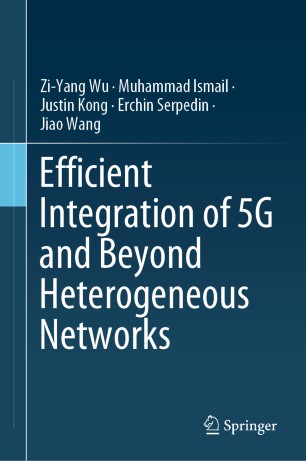

Most ebook files are in PDF format, so you can easily read them using various software such as Foxit Reader or directly on the Google Chrome browser.
Some ebook files are released by publishers in other formats such as .awz, .mobi, .epub, .fb2, etc. You may need to install specific software to read these formats on mobile/PC, such as Calibre.
Please read the tutorial at this link: https://ebookbell.com/faq
We offer FREE conversion to the popular formats you request; however, this may take some time. Therefore, right after payment, please email us, and we will try to provide the service as quickly as possible.
For some exceptional file formats or broken links (if any), please refrain from opening any disputes. Instead, email us first, and we will try to assist within a maximum of 6 hours.
EbookBell Team

4.0
26 reviewsThis book discusses the smooth integration of optical and RF networks in 5G and beyond (5G+) heterogeneous networks (HetNets), covering both planning and operational aspects. The integration of high-frequency air interfaces into 5G+ wireless networks can relieve the congested radio frequency (RF) bands. Visible light communication (VLC) is now emerging as a promising candidate for future generations of HetNets. Heterogeneous RF-optical networks combine the high throughput of visible light and the high reliability of RF. However, when implementing these HetNets in mobile scenarios, several challenges arise from both planning and operational perspectives. Since the mmWave, terahertz, and visible light bands share similar wave propagation characteristics, the concepts presented here can be broadly applied in all such bands.
To facilitate the planning of RF-optical HetNets, the authors present an algorithm that specifies the joint optimal densities of the base stations by drawing on stochastic geometry in order to satisfy the users’ quality-of-service (QoS) demands with minimum network power consumption. From an operational perspective, the book explores vertical handovers and multi-homing using a cooperative framework. For vertical handovers, it employs a data-driven approach based on deep neural networks to predict abrupt optical outages; and, on the basis of this prediction, proposes a reinforcement learning strategy that ensures minimal network latency during handovers. In terms of multi-homing support, the authors examine the aggregation of the resources from both optical and RF networks, adopting a two-timescale multi-agent reinforcement learning strategy for optimal power allocation.
Presenting comprehensive planning and operational strategies, the book allows readers to gain an in-depth grasp of how to integrate future coexisting networks at high-frequency bands in a cooperative manner, yielding reliable and high-speed 5G+ HetNets.